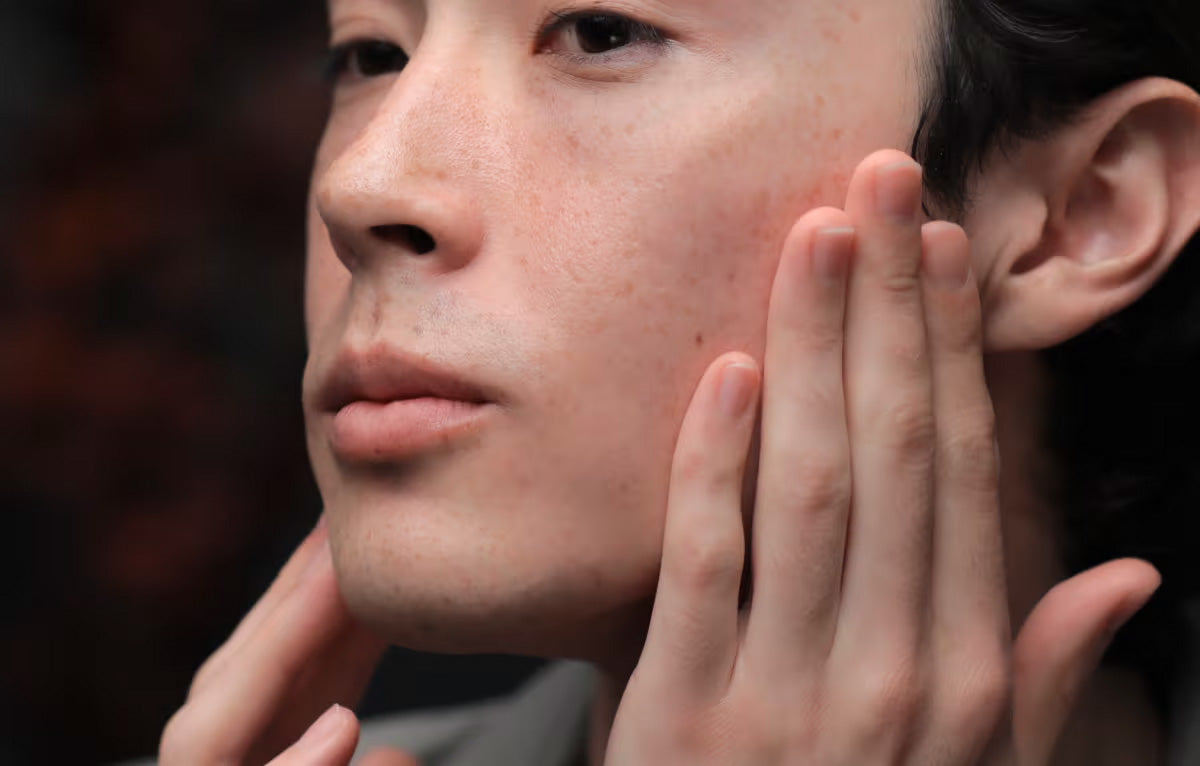EWG Verified & Leaping Bunny Certified | Free Gift $200+
EWG Verified & Leaping Bunny Certified | Free Gift $200+
Skin Types vs. Skin Conditions

Skin Types vs. Skin Conditions
Introduction.
I start every single one of my facial appointments the same way. I look at my client’s skin and perform a skin consultation. I place eye pads over their eyes, then look closely under a magnifying light. I am looking at pore size, areas with fine lines, and any tightness, dryness, acne, redness, or irritation.
I ask questions about their skincare routine and the products they use. I ask about their lifestyle, how their skin feels and reacts throughout the day, and whether they notice any cyclical changes. These factors will clue me to what is going on with my client’s skin.
After assessing, I determine their skin type and condition, which will guide me in selecting the appropriate products and treatments to give them the best results. In this post, I’ll discuss how you can analyze your own skin so you can understand the best way to treat it.
What is a skin type?
Your skin type is largely based on genetics and can be broken down into three basic categories: dry, oily, and combination. This is the constant state of your skin, and although certain factors can cause it to change, it generally stays the same for much of your life.
DRY SKIN
Dry skin can be characterized by small pore size, flaking, and a feeling of tightness.
OILY SKIN
People with oily skin usually notice a sheen of oil on their skin and larger pores, which can be prone to clogs that turn into blackheads, whiteheads, or acne.
COMBINATION SKIN
Combination skin is a combination of both dry and oily skin, generally with oiliness in the t-zone (nose, chin, and forehead) with dry areas everywhere else.
What is a skin condition?
Unlike skin types, which are typically constant, skin conditions are temporary and can often be treated. The main skin conditions people experience are acne, dehydration, sensitized skin, aging skin, and uneven pigmentation.
ACNE
Acne can be caused by a wide range of factors, including external from product use or improper cleansing or internal from diet or hormones.
DEHYDRATION
Dehydration is caused by a lack of moisture in the skin, which can be easily remedied by drinking more high-quality water, such as remineralized reverse osmosis water.
SENSITIVE
Sensitive skin includes inflammatory conditions such as eczema and rosacea, plus overall redness and sensitivity to light, heat, and certain skincare ingredients.
AGING
Aging skin, which is inevitable for everyone, can be characterized by fine lines, a lack of moisture, and loss of vibrance. While nobody can turn back the clock, there are ways to treat aging skin that restore vitality.
UNEVEN PIGMENTATION
Uneven pigmentation can be caused by acne, trauma to the skin (such as picking at your skin), sun exposure, or hormonal changes (melasma).

How to determine your skin type.
To determine your skin type, look in the mirror and examine your skin. You are looking for pore size and surface oil.
If you have larger pores and an oily sheen over most of your face, you likely have oily skin. (Sometimes oily skin can be dehydrated and appear to be dry, so pore size is usually the best indicator.)
If you notice large pores and oil only on your t-zone (nose, chin, and forehead), you may have combination skin.
If your pores are extremely small or generally unnoticeable and your skin looks matte, you probably have dry skin.
Analyzing skin conditions.
Skin conditions are pretty straightforward; what you see is what you get. Do you have active acne? Redness? Sun spots or scarring? Fine lines? Rough, flaky, dehydrated skin? Take note of any conditions your skin may have so you can seek out products or lifestyle changes that can treat them.
A solution for all skin types and conditions.
I designed our Holy Grail Face Oil formula to be a universal solution for all skin types and conditions. The combination of oils it contains produces equal levels of omega-3 and omega-6 fatty acids, which promotes balance in both dry and oily skin. It is lightweight and non-comedogenic, so it will not clog pores in oily or acnaeic skin, yet it is deeply nourishing for dry, dehydrated, and aging skin. It is certified hypoallergenic, so it works well for sensitive skin. Click here to learn more!
Also in Apotheca Edit

The Hidden Cost of Fillers: You’re Paying for Ingredients That Irritate Your Skin
Many skincare products rely on “filler” ingredients—fragrance, dyes, and texture agents that offer no real skin benefit and may contribute to irritation. Learn how to spot them and choose formulas built only with active, purposeful ingredients.

The Dangers of Designer Skincare
The price tag of luxury skincare doesn’t mean rare ingredients and better results. Many designer formulas prioritize packaging gimmicks and prestige over true skin health—often using silicones, synthetics, and preservatives that quietly damage your skin barrier. Learn about label transparency and why “premium” isn’t always better to reveal what skin nourishment really looks like.

The Top 10 Best (And Worst) Oils to Use On Your Face
I get asked all the time about using oils like avocado, olive, and coconut on the face—and the truth may surprise you. Not every “natural” oil is good for your skin. In this post, I break down the best and worst oils to use, what their comedogenic ratings really mean, and how to choose the ones that will actually nourish your skin instead of clogging it.
Subscribe
Sign up to get the latest on sales, new releases and more …
Reviews
See why 1000's have simplified their skincare with Flora Mirabilis.
